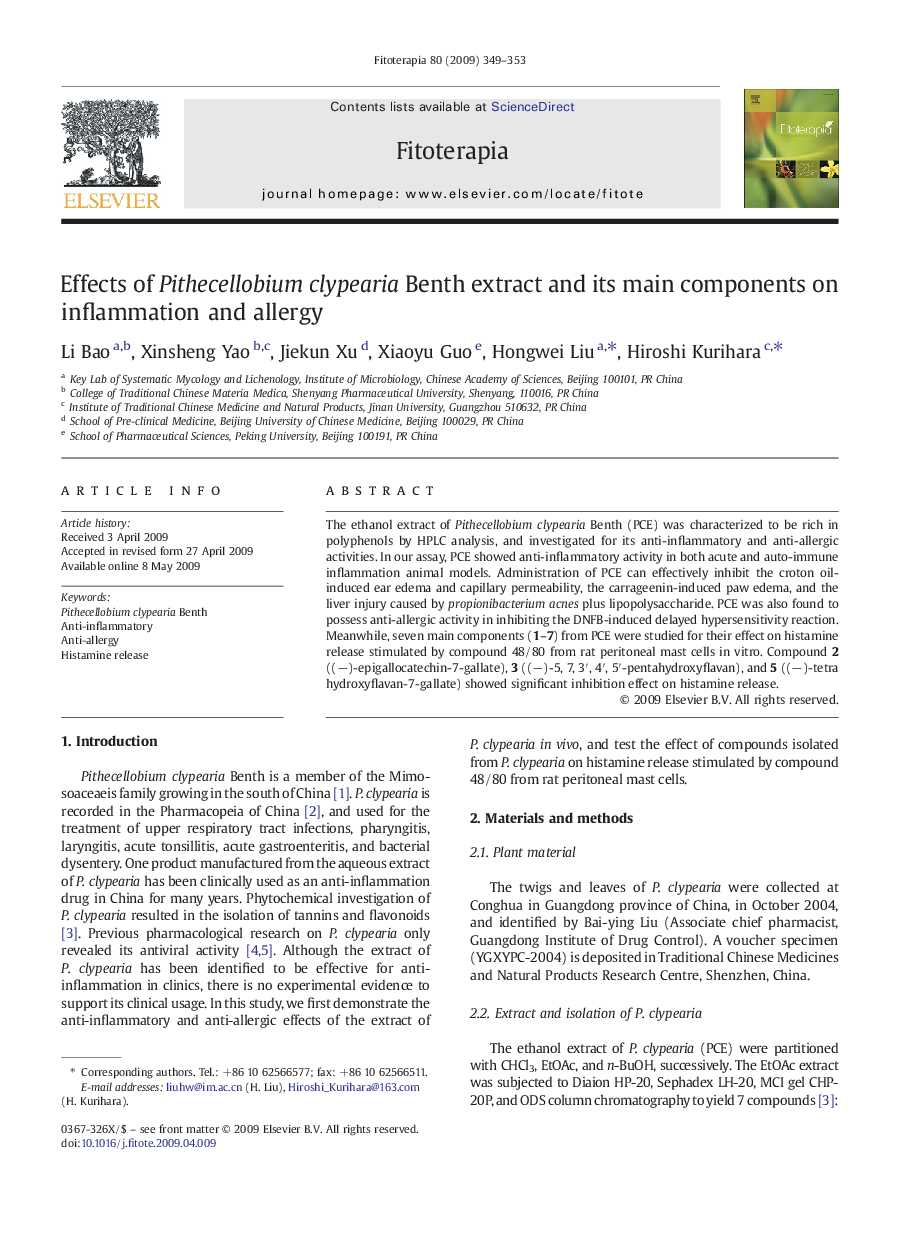| کد مقاله | کد نشریه | سال انتشار | مقاله انگلیسی | نسخه تمام متن |
|---|---|---|---|---|
| 2539437 | 1122177 | 2009 | 5 صفحه PDF | دانلود رایگان |

The ethanol extract of Pithecellobium clypearia Benth (PCE) was characterized to be rich in polyphenols by HPLC analysis, and investigated for its anti-inflammatory and anti-allergic activities. In our assay, PCE showed anti-inflammatory activity in both acute and auto-immune inflammation animal models. Administration of PCE can effectively inhibit the croton oil-induced ear edema and capillary permeability, the carrageenin-induced paw edema, and the liver injury caused by propionibacterium acnes plus lipopolysaccharide. PCE was also found to possess anti-allergic activity in inhibiting the DNFB-induced delayed hypersensitivity reaction. Meanwhile, seven main components (1–7) from PCE were studied for their effect on histamine release stimulated by compound 48/80 from rat peritoneal mast cells in vitro. Compound 2 ((−)-epigallocatechin-7-gallate), 3 ((−)-5, 7, 3′, 4′, 5′-pentahydroxyflavan), and 5 ((−)-tetra hydroxyflavan-7-gallate) showed significant inhibition effect on histamine release.
The ethanol extract of Pithecellobium clypearia Benth (PCE) was investigated for anti-inflammatory and anti-allergic activities. In our assay, PCE showed anti-inflammatory activity in both acute and auto-immune inflammation animal models. Meanwhile, the effect of compounds 1–7 isolated from P. clypearia on histamine release stimulated by compound 48/80 from rat peritoneal mast cells was tested. Compounds 2 ((−)-epigallocatechin-7-gallate), 3 ((−)-5, 7, 3′, 4′, 5′-pentahydroxyflavan), and 5 ((−)-tetra hydroxyflavan-7-gallate) showed significant inhibition effect on histamine release.Figure optionsDownload as PowerPoint slide
Journal: Fitoterapia - Volume 80, Issue 6, September 2009, Pages 349–353